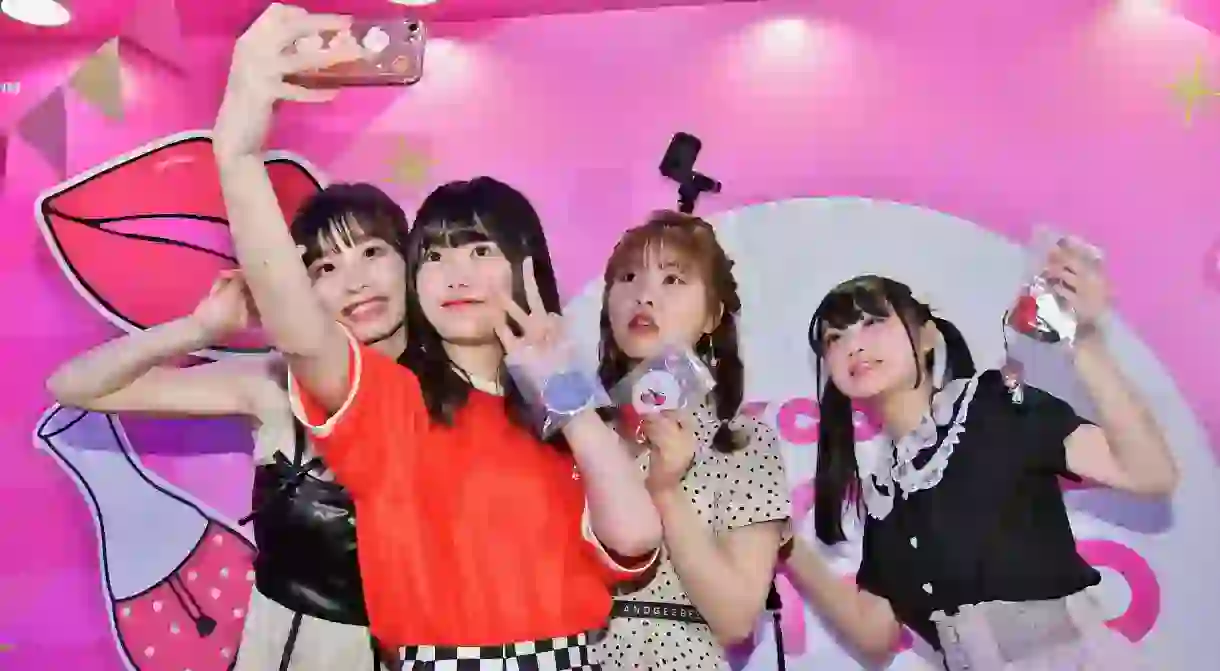What's the Difference Between J-Pop and K-Pop?

Though at times they get lumped into the same category, K-Pop (Korean pop), and J-Pop (Japanese pop) are as different from each other as they are from American pop. From marketing, style, genre, influence and accessibility, the two pop worlds are universes apart, but both remain incredibly fascinating genres in their own right. Here are a few ways J-Pop and K-Pop differ.
Did you know – Culture Trip now does bookable, small-group trips? Pick from authentic, immersive Epic Trips, compact and action-packed Mini Trips and sparkling, expansive Sailing Trips.
Image

When it comes to marketing, a pop group’s image is equally as important, if not more important, than the music. Image is without a doubt one of the biggest differences between K-Pop and J-Pop.
Being “kawaii” (cute) but sexy still reigns supreme in Japan. Just look at some of the county’s biggest and most diverse pop music creations, like the straight-up sweet girl group AKB48, the metal pop trio Babymetal, and the country’s “Lady Gaga” Kyary Pamyu Pamyu. They’re all rather different musically and conceptually, but the one uniting element is their “cuteness.”
More influenced by Western media and street style, K-Pop’s biggest names, like BigBang, EXO and 2NE1, have built their image on a harder-edged “cool” and more overt sex appeal.
Influence
While for J-Pop the focus has always been on their local market, musically the genre has stayed more or less in a vacuum since its inception. Though it can be quite diverse musically, the genre doesn’t borrow too much from outside musical influences, and the same goes for the genre’s image and marketing.
K-Pop is definitely on the other end of the spectrum. Major players in the K-Pop scene tend to wear their musical influences on their sleeves. Think mainstream US hip-hop and R’n’B. Just look at current K-Pop heavyweight Dean, who is breaking cultural barriers by collaborating with some of the biggest names in US hip-hop, like Anderson .Paak.
Focus on marketing

This is the big one. Though it’s more about the practicalities of the industry rather than the music, when it comes to the pop world it’s all entwined. Japan as a nation is currently sitting at a population of almost 130 million people, two-and-a-half times bigger than South Korea.
Thanks to its huge population and a captive market, there’s little financial benefit or need for the Japanese pop industry to really branch out and try to appeal to outside audiences, so it simply doesn’t. The work that would go into international touring, learning another language, the marketing behind pushing its brand into unaware international audiences is a lot of work for potentially little financial gain.
However, when it comes to recognition, few Japanese acts have gained some, like Kyary Pamyu Pamyu, Babymetal and to an extent AKB48. Many other just as big J-Pop acts have gained none, like the long-running trio Perfume and SMAP. It’s an assumption, but it could be due in part to the West’s desire to see “weird” or “quirky” Japan (of which Kyarry and Babymetal fit the mold) and “normal” J-Pop like, SMAP and Perfume, just don’t garner the hype. It’s a strange world of passive success.
K-Pop, on the other hand, has long been branding itself as the cool cousin of the Western pop scene. Given that the country’s population sits at a more humble 51 million people, the opportunity and need for growth internationally is exponential.
Acts like American-Korean Jay Park and BigBang member G-Dragon have helped the K-Pop genre feel more accessible to Western audiences, but still Korean talent agencies are becoming actively more aggressive in their marketing tactics and the way they handle their artists. Because ultimately that’s where the opportunity for profit lies.
Like their Western counterparts, K-Pop artists have signed on to international distribution deals and are widely available on a variety of streaming services, like Apple Music, Spotify and, of course, YouTube. This accessibility is playing off; remember Psy’s 2012 mega hit “Gangnam Style”?
However, much like the industry as a whole in Japan, many J-Pop companies and labels are reticent to adopt these methods. With restrictive copyright and broadcast laws, and the fact that CD is still the main format for music consumption in Japan, there’s a huge lack of accessibility to the J-Pop world for international fans.
Sonically
As mentioned before, influence, style and market focus definitely seep into and potentially dictate a lot of what pop music sounds like today, so there’s no surprise that musically both genres are very different.
While J-Pop likes to march to the beat of its own isolated drum, often resulting in the wonderfully obtuse, K-Pop goes down a more mainstream route. Though both are made for mainstream consumption, the unfamiliar key changes and super sweet, high-pitched vocals can make J-Pop a little less accessible for mainstream Western pop fans.
K-Pop is often considered a slightly left-of-center take on R’n’B. Given the huge amount of acts out there today, though, no matter what you taste, you’ll no doubt be able to find a J-Pop or K-Pop band for you.













